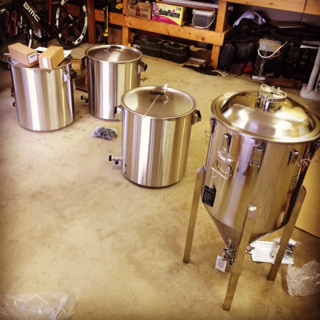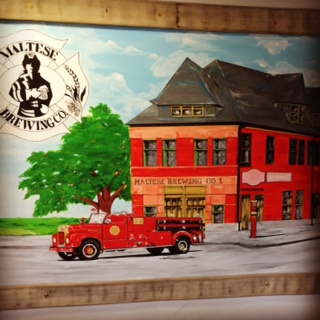After watching neighbor Dan in his hopyard down the road from Hawksbill Cabin, I got interested in trying to grow them for myself - I also started brewing at around the same time, and eventually used the hops I was growing in the backyard in some of my beers.
It all started with this Willamette, which is in a five gallon pot along the fence in the back. The plant is three years old now, and I am sure there are roots that spread out deep and wide from the pot. It would take a lot of work to move it, in other words - but I may do that next year.
There are quite a few other "home growers" out in the Luray area, and this year I got to know Kevin a little better. He's always been fond of Fuggles, which he uses for some very tasty porters and stouts. His plants are thriving, and they are mature - seven years old, in fact.
 Because he championed Fuggles so strongly, it was one of the varieties that I chose to plant in the commercial hopyard we started last year. In fact, this year, we're going to add a second row of Fuggles, for a total of 120 crowns. We'll need to pull out the 20 or so hills of Centennials - I hope to salvage those in some temporary pots and use them in the future when we expand.
Because he championed Fuggles so strongly, it was one of the varieties that I chose to plant in the commercial hopyard we started last year. In fact, this year, we're going to add a second row of Fuggles, for a total of 120 crowns. We'll need to pull out the 20 or so hills of Centennials - I hope to salvage those in some temporary pots and use them in the future when we expand.My plan on Sunday was to get out in the yard and trim back all those shoots from the Willamette. Some of them are already four feet long, and they are nearly ready to grab on to the fence and climb! I'll have to prevent that!
Meanwhile, Kevin told me he got out to clean up the the Fuggles row. He sent me this photo after he thinned the rhizomes - he estimated a half bushel of them. We're going to get together for a look at them soon. I may be able to use a few of them for fills in my original row.
It reminds me that I need to get out for a look at Dan's hopyard soon, too. I bet that there's some action in his backyard as well!























